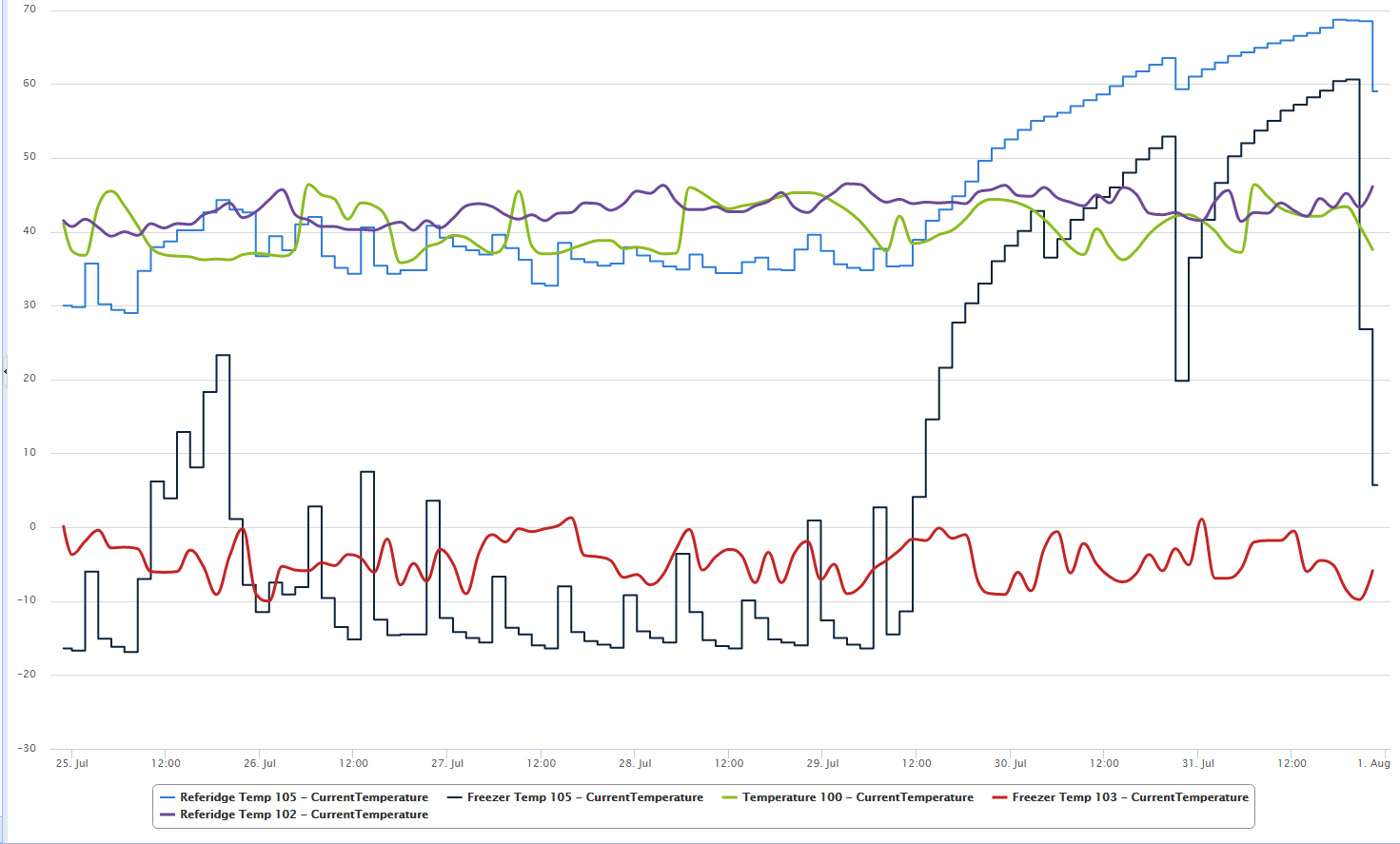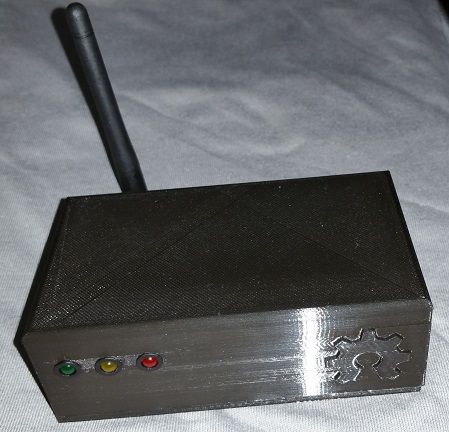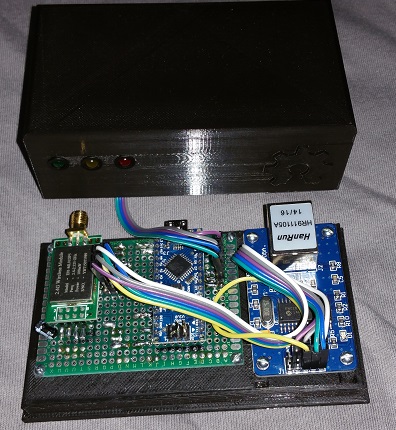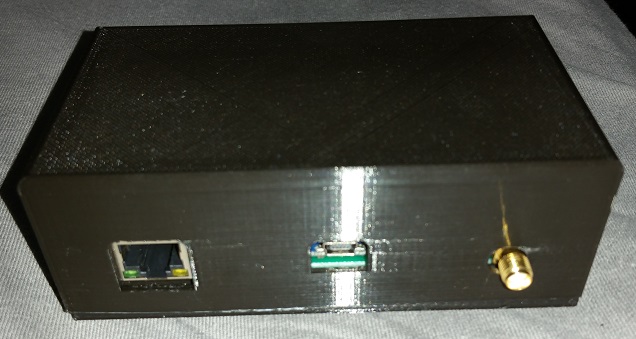@TheoL Absolutely you can use it in a presentation. It might be useful (or not) to know that node 105 is a refrigerator/freezer combo, node 102 and 103 are in the same refrigerator/freezer, and node 100 is a chest freezer I have an external thermostat on and I use it as a refrigerator.
Ironbar
Posts
-
Refer Madness -
Refer MadnessI have a refrigerator that has been acting funny lately. I have been watching it display non-normal temperatures for the last couple of weeks. I suspected that the thermostat in the refrigerator is going out. Thanks to mysensors, I am able to monitor the performance of several refrigerators and saw the problem early. I ordered the part I thought was at fault, moved all the vital items out of the refer, and waited (just for fun) for it to fail.
It went out Friday night. I replaced the thermostat tonight. Thanks again to Mysensors for saving 400+ dollars in meat I had in there.

-
Arduino Nano and NRF24L01+PA+LNA@Boots33 said:
NRF24L01+PA+LNA
Boots33, I completely agree. I have recently decided to rebuild my gateway and I am very pleased this thread came up so I can use the AMS1117. Any idea what the NRF24L01+PA+LNA has the potential to draw? I have looked through the data sheets but I have not came up with a definitive answer.
Although my mysensors network works very well, I am always looking for a way to improve it. I learn something new almost every day from this forum so thanks for your input.
-
Gateway sketch for ENC28J60 for 2.0Thank you. I'm not sure how I missed that.
-
Arduino Nano and NRF24L01+PA+LNA@Boots33 said:
AMS1117
I have nodes running off the LE33 and NRF24L01+PA+LNA shielded that are running on "HIGH" power. I have not had any problems with them although in theory they should not work.
I'm glad you cited the AMS1117. I will give them a try. It looks like they have a max output of 800mA. Is that correct?
-
Arduino Nano and NRF24L01+PA+LNAI'm not sure the difference in those two but check out the store page:
https://www.mysensors.org/store/#regulators
The LE33 does work with the NRF24L01+PA+LNA but I think the XC6206P332MR would be even better. The LE33 has a maximum output of 100 mA and the XC6206P332MR has a maximum output of 250mA.
-
Arduino Nano and NRF24L01+PA+LNAMy experience is that it will work if you change myconfig.h to low power setting for the radio.
However, for best results I would suggest using a different power source and a LE33 or other regulator to provide significant power for the antenna. The nano only outputs 40mA.
There are a lot of threads that address this question if you dig. I am fairly new here but I use a 5 volt 2 amp power supply when I use the nano with the NRF24L01+PA+LNA. I wire the nano directly off the power supply and use a regular between the power supply and the radio.
-
Gateway sketch for ENC28J60 for 2.0Has anyone already done a gateway sketch for the ENC28J60 for Mysensors 2.0? I did not see one in the github.
I am just trying to save a little time.
Thanks.
-
Internet of Poultry - Fully automated chicken shedFirst off, excellent design. Great job!
I have had one of these running for a while. I did not want mine to react to light levels because I did not want it to close during a thunderstorm, etc. and lock the chickens out. That being said, I have mine close 20 minutes after sunset and open 20 minutes after sunrise. The first couple of nights some of the chickens were locked out because they came home to late. I had to manually let them in. After a couple of days they learned quickly (despite not being very smart creatures) and they head to the house early before the door closes. After that, my camera alerts me to any movement in the house. I have only had one false alarm in a couple of months.
I have a pretty strong outdoor pen and I have still had multiple black snakes, one raccoon, and one possum get in. The raccoon ate a chicken and one snake bit one. After installing the door I have not had one injured chicken.
Mine is pretty low tech. I used a single push button and mysensored a relay board that turns a dc motor with a 3d printed gear that raises/lowers the door. I have had zero problems with it since installed. Thanks Hek!
The one big thing I learned, Transient Voltage Suppressor. I used a larger dc motor due to the weight of my door and every time the door opened it scrambled the Arduino with electric interference. Took me forever to figure out what the problem was and how to fix it.
Now if I can just figure out how to mysensor it to let me know when a chicken lays an egg.....
-
my sensors and gateways will work with new versions vera firmware ?Yes, it runs fine on the newest Vera versions. I run it on a Lite and an Edge.
-
Cloud storage for home automation?Look into the Vera. Although you do have to have Internet access to set it up, I believe the only thing stored there is your user information and a few minor things. I know you do not have to have Internet access to make it work. i. e. Power failure.
-
Device Data LoggingI use an app for Vera called Datayours There is also Datamine. You can log anything you want with either app.
-
Understanding Current RequirementsSince I am new to all of this. Can someone tell me if this is even remotely correct?
From what I can find, current supply/requirements are as follows:
Arduino Nano - 500 mA total, no more than 40 ma supply to each I/O
LE33 - 100 mA supply max
SOT-23 XC6206 - 200 mA supply maxnrf24l01+ 60 mA draw max but looks like average is around 11 ma?
nrf24l01+pa+lna 115 mA draw maxIf this is correct, it would seem that using the USB powered Nano should work fine for the nrf24l01+. Does the LE33 supply enough current for the nrf24l01+pa+lna or should I use the SOT-23?
I'm sure this has been a previous thread but I am failing to find it.
Also, I noticed the Nano has a 6-12 volt recommended rating. Why? Would any performance be gained from giving it 12v?
-
Which Lab Power Supply?I am really considering this one:
EEVBlog has a little write up about it. It has a fan but it is variable and they say it is quite:
http://www.eevblog.com/forum/testgear/inside-the-new-korad-ka3305p-linear-psu/
-
Repeater Node via Ethernet?I have never tested this either but wouldn't it be better to make the second gateway and ID of 1. Both gateways could talk to the controller and remain on the same frequency. The nodes would pick whichever gateway they could talk to.
If you change frequency on the second gateway, if you had a portable device (such as a keyfob) it would only work with one of the gateways.
-
NRF24L01+ range of only few metersMy guess is if the sensors work and suddenly stop, you have something else interfering with the radios. Could be a microwave, AC unit, etc.
I about gave up on this project last year. I had several units built that worked fine and then one day all of them quit. After several frustrating weeks, I discovered my wifi router somehow was interfering with the units. It was an old unit and I needed to replace it. After it was gone, everything went back to working correctly.
-
My Gateway Project BoxIt is the shielded nrf24l01+lna/pa. I do not have any scientific test for how well they work.
My real world test is that I was having trouble transmitting directly from my gateway to two out buildings near my house (~150m). In theory, the non-shielded should have worked but it is through several brick walls and they would only communicate about every fifth transmit. After switching the gateway and outbuildings to shielded radios, they receive every transmission.
I had to change the transmit power to low because they do indeed interfere with themselves.
Per our previous discussion, I believe you are correct and they are not completely shielded correctly. At some point this year, I want to be able to transmit from my home to my well house (~150m - brick structure) and then to my front gate (~800m). It is not LOS because of hills and trees.
Part of the design of this enclosure was the idea that you could wrap the interior of it with aluminum foil to shield the radio. Then you mentioned the shielded radios so I thought I would give them a try. Overall, I think the results between the two would be similar.
To most it would seem unimportant for radios to communicate directly with the gateway due to the mash network. The problem I have is, there are mission critical items in my network I want to work. For example, if power goes out: My gateway is running on battery backup as well as my router, modem, etc. If I have a battery operated sensor monitoring the temperature of my baby chicks, it will continue to monitor them. If I rely on a mesh network, and one of the relay sensors goes out, I could loose the sensor monitoring the chicks.
-
My Gateway Project BoxThank you.
Here is the enclosure on thingiverse:
http://www.thingiverse.com/thing:1410018
I have another version for non-shielded radios as well. I have not uploaded it to thingiverse yet though.
The logo is for open-source hardware. I didn't want to violate any copyrights by putting on the MySensors logo and uploading to thingiverse. Plus, the MySensors logo is hard to 3d print. :wink:
-
Sensebender Micro CaseSure. Here it is on thingiverse:
http://www.thingiverse.com/thing:1410004
The battery holder is a single holder with two AA batteries. The batteries are ran in series. To be honest, I can't remember where I bought the holders but I like them because they clip on like a 9 volt so you can easily disconnect the battery holder from your project.
-
My Gateway Project BoxHere is my gateway enclosure. I know the solders are terrible but it works awesome.



